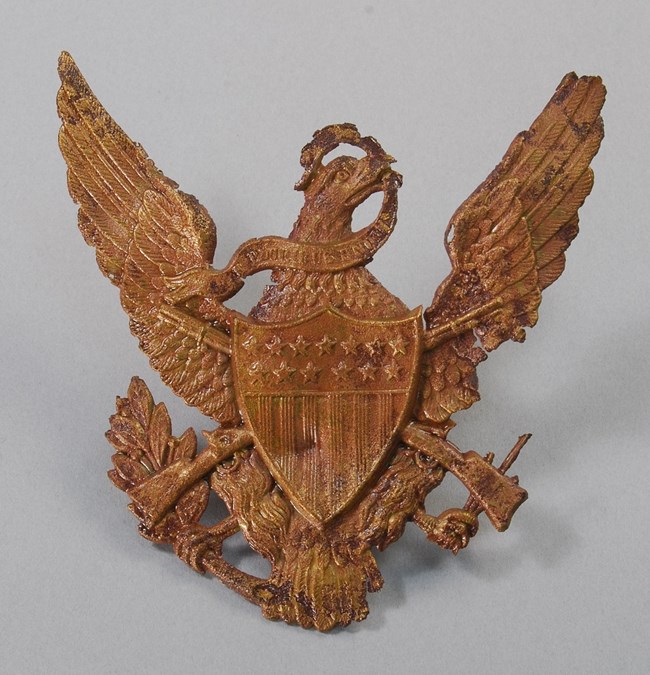Part of a series of articles titled Vancouver Barracks in the 1880s.
Article
Vancouver Barracks in the 1880s: Timeline

NPS Photo, Fort Vancouver National Historic Site, FOVA 21995
1879
Previously known as Camp Vancouver (1849), Columbia Barracks (1850-1853), and Fort Vancouver (1853-1879), the Army post was officially renamed Vancouver Barracks. The O.O. Howard House was completed by 1879. A new cavalry area was built with barracks and a large stable. The Sheepeater (Tukudika) Indian War was the last of the Indian Wars to be administered from Vancouver Barracks.
1880
The Chemawa Indian School was founded with assistance from Vancouver Barracks. In December, General O.O. Howard ended his tenure as the Commander of the Department of the Columbia, a position he had served in since 1874. President Rutherford B. Hayes visited the post.
1881
From January to August, Colonel Frank Wheaton was the Commander of the Department of the Columbia, followed by Brigadier General Nelson Miles. The two men alternated command over the Department until July 1885, when Brigadier General John Gibbon arrived. Sarah Winnemucca visited and translated for Native American prisoners, who were later released to the Fort Hall Reservation in Idaho. Three men from the Siletz Reservation were incarcerated at Vancouver Barracks. A new band barracks building was built. The post theater was completed; this building later became a post library and school.
1882
Alvord Road was constructed. A post school was established in an existing building south of Alvord Road.
1883
Between 1883 and 1885, the military cemetery at the west end of Officers' Row was relocated to its current location on Fourth Plain in Vancouver, Washington. A remodeled building in the former Arsenal area, on the east side of the post, became the headquarters building and adjutant office.
1884
The 14th Infantry arrived at Vancouver Barracks, relieving the 21st Infantry, who moved on to Nebraska. A new post hospital was built, which was in use until the present hospital was built in 1904-1905. The Hospital Corps was expanded.
1885
Brigadier General John Gibbon arrived at Vancouver Barracks and took command. In November, he led 10 companies of the 14th Infantry to Seattle to restore peace after anti-Chinese riots. A new post headquarters was built north of McClellan Road. Four new infantry barracks buildings were completed. A telephone system of 25 wires connected all the staff officers' quarters with the headquarters building. A military telephone line linked Army headquarters in Portland, Oregon, to Vancouver Barracks. A visitor to Vancouver Barracks described it as the "principle military post of the Pacific Northwest."
1886
In February, Gibbons troops returned to Seattle to again restore peace after additional violence against Chinese immigrants. From May 1886 to 1891, Gibbon and O.O. Howard alternated command of the Department of the Columbia. General William Tecumseh Sherman visited Vancouver Barracks. The post canteen moved to a small building north of the gymnasium. A new guardhouse was built. The Parade Ground expanded west to its present boundary at Fort Vancouver Way. The Marshall House was completed and occupied by General Gibbon.
1887
Colonel Thomas M. Anderson became the post commander, alternating with others. The Catholic St. James Mission, located at the corner of Fort Vancouver Way and East 5th Street since the days of the fur trade, was forcibly closed by the Army. The Catholics relocated to St. James Proto-Cathedral, still located in Vancouver today.
1888
Troops from the 14th Infantry patrolled the Northwest "just to let the tribes know that they were on the job." The St. James Mission and other mission buildings were burned down.
1889
Brig. Gen. Gibbon helped Chief Joseph resolve an issue with Sko-las-kin and the Nez Perce on the Colville Reservation. Sko-las-kin was tried at Vancouver Barracks and sent to be imprisoned at Alcatraz. Chief Joseph visited Vancouver Barracks. In November, Washington became the 42nd state in the United States.
Last updated: July 7, 2021
